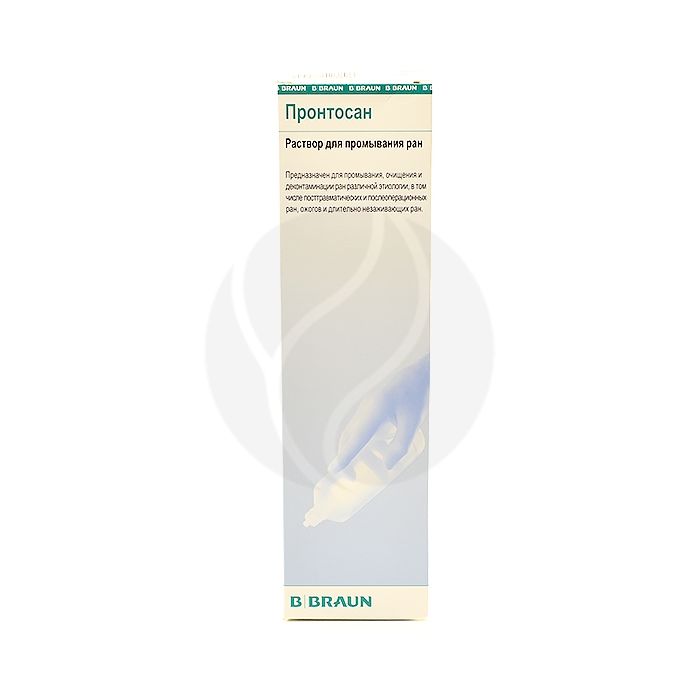Prontosan solution 350ml, No. 1
Expiration Date: 05/2027
Russian Pharmacy name:
Пронтосан раствор 350мл, №1
purulent-necrotic wounds of various origins, including long-term non-healing wounds, such as trophic ulcers, bedsores, etc .;
post-traumatic wounds with the presence of foreign and necrotic tissues;
thermal and chemical burns, especially in lesions with a large amount of necrotic tissue and scab;
wound surfaces around stomas, catheters or probes;
postoperative wounds.
The wound surface must be thoroughly rinsed and cleaned with Prontosan solution to remove foreign and necrotic tissues, exudate, surface films and crusts, fibrin and biofilms.
In order to reduce the risk of introducing microbes into the wound, it is recommended to cleanse as much of the area around the wound as possible with Prontosan solution.
Gauze wipes or other types of dressings soaked in Prontosan solution can be used to cleanse and moisturize the wound surface according to their instructions. Due to the relatively low water-holding capacity of the solution (unlike Prontosan gel), dressings should be carried out at least once a day, and preferably several times a day.
To remove copious accumulations of fibrin, thicker films, crusts, scabs, etc. it is recommended to continue treating the wound with Prontosan gel.
Wound washing with Prontosan solution should be performed at such a frequency that will be sufficient to completely remove all films and necrotic tissues and achieve optimal wound cleansing to accelerate its healing or for the subsequent stage of surgical treatment.
For washing large wound surfaces, as well as wounds in hard-to-reach places, it is recommended to treat the entire affected organ or part of the body with Prontosan solution for at least 15 minutes.
Prontosan solution can be warmed to body temperature immediately before use.
To remove denser films, crusts and scabs, in the presence of abundant accumulations of fibrin, dense necrotic tissues, etc., it is recommended to continue treating the wound with Prontosan gel.
The wound surface should be covered with a layer of gel at least 3 mm thick. Prontosan is applied to the wound or injected into the wound cavity. From above, the layer of gel is covered with two or three sterile gauze wipes or other dressings. Prontosan should remain on the wound until the next dressing. Dressings are done daily. As the wound is cleared of necrotic tissue, dressings can be done every other day.
Depending on when the next dressing is scheduled, a different amount of Prontosan gel can be applied, with a layer of 3 to 5 mm thick. The application of the gel should be carried out at such a frequency that will be sufficient to completely remove all films and necrotic tissue and achieve optimal clearance of the wound to accelerate its healing or for the subsequent stage of surgical treatment.
Active ingredients:
0.1% undecylene amidopropyl betaine;
0.1% polyaminopropyl biguanide (polyhexanide)
Individual intolerance to the components of the drug.
The healing of the wound surface can be slowed down by the presence of exudate in the wound, formations in the form of films, crusts and scabs of dead tissue and cell detritus and / or biofilms. These coatings are difficult to remove and create good conditions for the growth of pathogenic microflora.
In addition, even seemingly clean wounds, especially post-traumatic ones, can be contaminated with microorganisms that can cause infectious complications in the wound.
Prontosan allows you to thoroughly cleanse the wound surface, moisturize the wound and suppress the bacterial flora, which creates conditions for early wound healing. Thanks to the antibacterial component, Prontosan can be successfully used to prevent infection of wounds with pathogenic microorganisms and to prevent the development of infectious complications in the wound.

